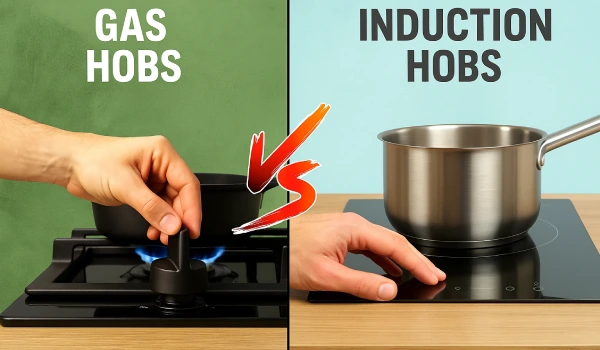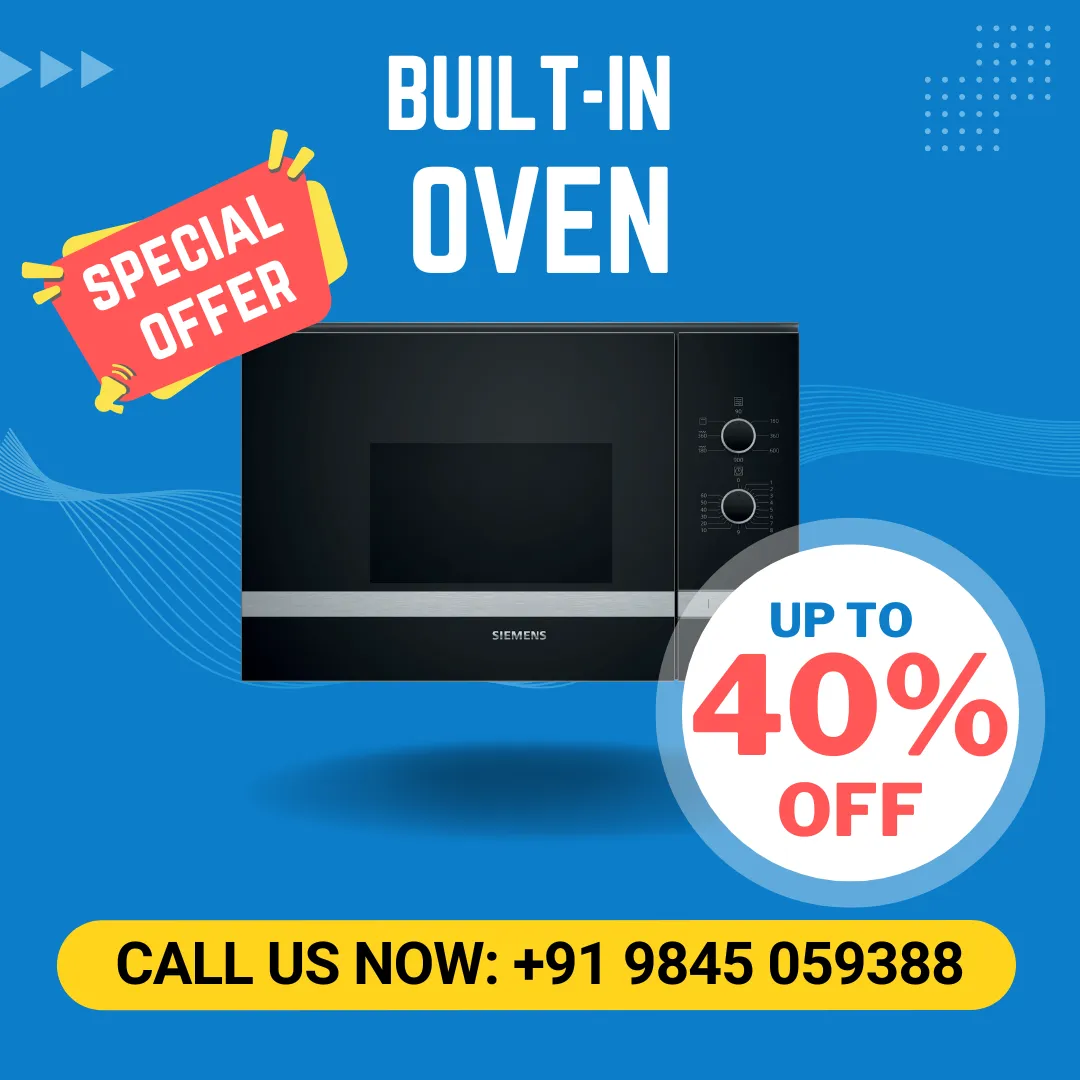Enhance your home with our premium appliances.
An Expert Guide to Gas vs Induction Hobs from Hob Dealers

The hob is frequently the focal point of the kitchen, which is the hub of every house. Whether you’re preparing quick weekday meals or elaborate weekend feasts, the type of hob you use can greatly influence your cooking style and results. Gas and induction hobs are the two prominent options available currently. Each comes with unique advantages, distinct characteristics, and considerations to keep in mind before purchasing.
In our previous blog, we discussed the seven tips to follow to find the perfect hob for your kitchen. In this blog, we will explore five key differences between gas and induction hobs so you can make an informed choice.
5 Tips for Choosing the Right Cookware for Your Hob
Not all cookware is created equal. Gas hobs work with almost any pot or pan, while induction hobs need magnetic-based cookware to perform efficiently. Knowing this difference helps you choose the right hob without extra kitchen expenses. Below are the five key distinctions:
-
Heating Method
Gas Hobs: An exposed flame serves as the heat supply for gas hobs, and interacting directly with the flame transfers the energy to the kitchenware. This method offers a tactile, responsive way to cook—when you turn the knob, you can see the flame size change instantly.
Induction Hobs: They use electromagnetic coils beneath a glass-ceramic surface to generate heat directly within the pan itself. This ensures that the heat is focused precisely where it is required and that the hob surface stays comparatively cool.
Why it matters: If you enjoy the feel of controlling a visible flame and using any cookware you like, gas hobs might be more satisfying. If precision and efficiency are top priorities, induction delivers with impressive speed and control.
-
Cooking Speed and Efficiency
Gas Hobs: While gas hobs are reliable, they’re generally slower to bring food or water to temperature. This is because heat escapes around the sides of the cookware, reducing efficiency.
Induction Hobs: Induction is widely praised for its speed. A container of water may be brought to a boil in just under half the time of a gas hob since it heats the cookware directly. This efficiency also means less wasted energy, which can translate to lower electricity bills over time.
Why it matters: If you’re often pressed for time or want to minimize energy consumption, induction hobs offer clear benefits. That’s why many modern kitchens, especially those designed by a premium kitchen appliances dealer, recommend them for busy households.
-
Safety Features
Gas Hobs: While modern gas hobs include safety features like flame failure devices and automatic ignition, they still involve open flames and a supply of combustible gas. Additionally, if the device is not maintained correctly, there is a slight chance that gas will leak.
Induction Hobs: These hobs shine in safety. Since the surface stays cool except under the cookware, the risk of burns is much lower. Additionally, they shut off on their own if the pan is taken out or no pan is found.
Why it matters: For households with children or elderly members, induction hobs offer a safer alternative. However, experienced cooks confident in flame safety may still opt for gas with advanced safety features.
-
Cookware Compatibility
Gas Hobs: The adaptability of gas hobs is what makes them so lovely. They work with nearly every type of cookware—stainless steel, cast iron, copper, ceramic, and more. This makes them ideal if you already have a diverse collection of pots and pans, and many hob dealers highlight this flexibility as a key selling point.
Induction Hobs: These hobs require magnetic-based cookware, meaning some existing kitchenware may not work unless it has a ferrous metal base. A small magnet can be utilized to verify this at home; if it adheres to the pan's bottom, it is induction-friendly.
Why it matters: If you don’t want to invest in new cookware, gas hobs may be the practical choice. On the other hand, the investment in induction-compatible cookware can pay off in improved performance and efficiency.
-
Design and Maintenance
Gas Hobs: These usually feature raised burners and grates, which, while stylish and professional-looking, can be trickier to clean. Food and grease can build up around burners, requiring more frequent and detailed cleaning.
Induction Hobs: The flat, smooth surface of an induction hob makes cleaning a breeze—simply wipe it down with a damp cloth. Since spills don’t burn onto the surface as easily, maintenance takes less time and effort.
Why it matters: If you value quick cleanup and a sleek, minimalist look, induction hobs have the upper hand. Gas hobs, however, bring a classic charm that appeals to many homeowners who want a timeless, professional-style kitchen.
Conclusion:
Choosing between gas and induction hobs isn’t just about picking a cooking appliance—it’s about matching your kitchen’s personality to your cooking style. Gas offers tradition, flexibility, and visual control, while induction brings speed, safety, and modern efficiency.
By consulting trusted local experts, such as experienced hob and chimney dealers, you can weigh the benefits of each option against your unique needs. Whether you opt for the reliability of gas or the innovation of induction, the right hob will enhance your cooking experience for years to come. Call now at +91 9845 059388!















